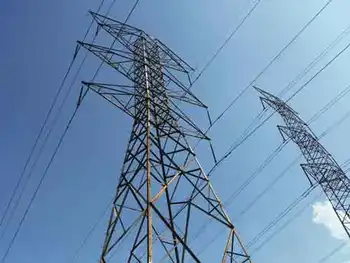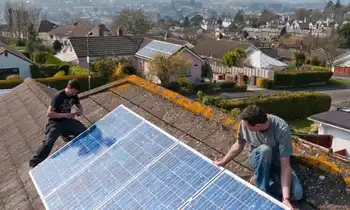Connecticut announces new funding to promote electric vehicles
HARTFORD, Connecticut -- - ConnecticutÂ’s Department of Energy and Environmental Protection DEEP recently announced that it is strengthening efforts to promote the sale of Electric Vehicles EVs with additional funding for a consumer rebate initiative and grants to encourage state agencies and local governments to purchase these zero emissions vehicles and install charging stations.
“With the Connecticut International Auto Show opening Friday at the Connecticut Convention Center, now is the perfect time to focus attention on the advantages offered by EVs,” said DEEP Commissioner Robert Klee. “We’re doing just that by making an additional $1 million in funding available for a rebate program that’s putting money right back in the pocket of those who purchase an EV and making another $1 million in grants available to state agencies and cities and towns who want to purchase EVs for their fleets and install charging stations for public use.”
Rebate Program
DEEP’s consumer rebate program program – known as the Connecticut Hydrogen and Electric Automobile Purchase Rebate Program CHEAPR – provides a cash rebate of up to $3,000 for Connecticut residents, businesses, and municipalities who purchase or lease an eligible electric vehicle EV. EVs covered by CHEAPR include battery electric, fuel cell, and plug-in hybrid vehicles.
Rebates offered through the CHEAPR program are on a sliding scale, with the maximum $3,000 amount for those who purchase or lease an EV with the greatest battery capacity. Rebates of $1,500 and $750 will be provided for EVs that travel shorter distances on battery power.
Since the program was launched in May more than $632,000 in rebates have been issued or reserved for the purchase or lease of 278 vehicles.
The original funding for the rebate program, which is being administered through the EVConnecticut program, came from $1 million available to the state through an agreement that allowed for the merger of Northeast Utilities and NSTAR in April of 2012. The new $1 million in funding is available as a result of revenues the state receives from its participation in the Regional Greenhouse Gas Initiative RGGI.
The RGGI program was designed to reduce carbon emissions from electric generating facilities. Under the program, power plant emissions allowances are sold through auctions and the proceeds are invested by in state energy efficiency, renewable energy, and other consumer benefit programs.
Grants for Cities and Towns and State Agencies
Revenues from RGGI are also being used to provide more than $1 million in grants to cities and towns and state agencies who purchase eligible EVs for their fleets and install charging stations for their use as well as for the public.
This new grant program will provide a reimbursement of $15,000 per EV and $10,000 per charger meeting the program guidance specifications. The grant guidelines limit recipients to a maximum of six EVs and chargers.
The focus on charging stations – as well as sales of EVs – builds on DEEP’s efforts to develop a statewide, publicly available charging network. An EVConnecticut grant program has financed the installation of 134 publically available charging stations with 194 plugs. These stations are part of a network of 187 publicly available charging stations with 419 plugs across the state. This network makes it possible to charge an EV anywhere you travel in the state, making Connecticut the first “range confident” state in the nation.
Why EVs?
“Putting more Connecticut drivers behind the wheel of an EV is what it will take to drive down harmful carbon emissions linked to climate change, reduce conventional pollutants that threaten our air quality and public health, and help motorists reduce the cost of owning and operating a car,” Commissioner Klee said.
“The transportation sector is responsible for about 40 of the carbon emissions in Connecticut and we must address that challenge if we are going to meet the state’s aggressive climate change target of reducing emissions 80 from 2001 levels by 2050,” Commissioner Klee said. “In addition, motor vehicles fueled by gasoline and diesel are the primary source of pollutants that create smog – which causes illness, especially among infants, senior citizens and those prone to respiratory ailments.”
Commissioner Klee also said the expanded consumer rebate initiative and new grant program for cities and towns and state agencies will help Connecticut meet its goals as part of an eight-state effort to put 3.3 million Zero Emission Vehicles ZEVs on the road by 2025.
“Connecticut has made tremendous strides over a short period of time in helping to put more EVs on the road,” said Commissioner Klee. “We remain committed to this effort because it represents a ‘triple win’ that comes along with increasing our energy independence by reducing fossil fuel consumption, creating new opportunities for growing our green economy and improving public health.”
Related News

Lawmakers question FERC licensing process for dams in West Virginia
WASHINGTON - As federal lawmakers plan to consider a bill that would expand Federal Energy Regulatory Commission (FERC) licensing authority, questions emerged on Tuesday about the process used by FERC to issue two hydropower licenses for existing dams in West Virginia.
In a letter to FERC Chairman Neil Chatterjee, Democratic leaders of the House Energy and Commerce Committee raised questions about hydropower licenses issued for two dams operated by the U.S. Army Corps of Engineers on the Monongahela River in West Virginia.
U.S. Reps. Frank Pallone Jr. (D-NJ), the ranking member of the Subcommittee on Energy, Bobby Rush (D-IL), the ranking member…




